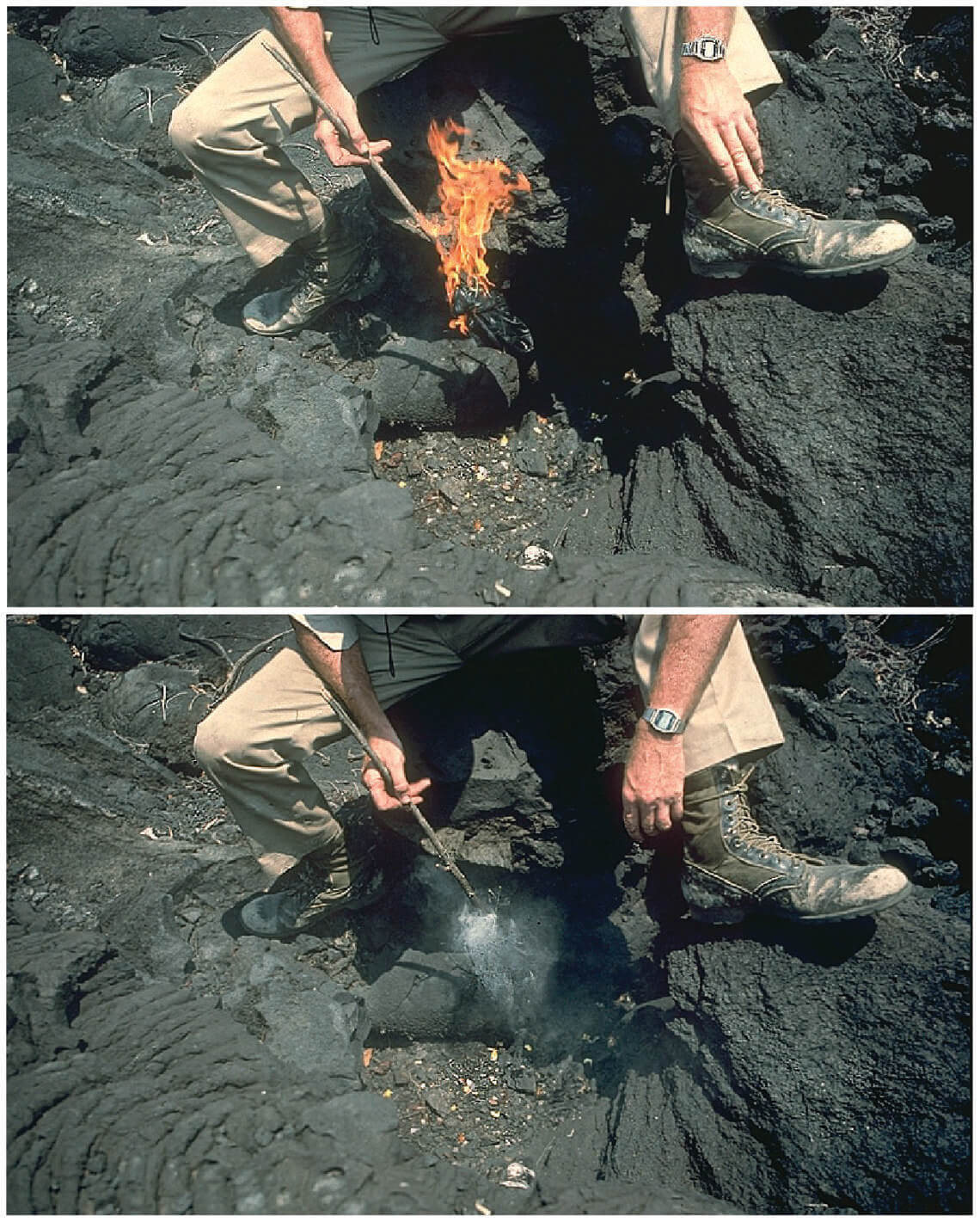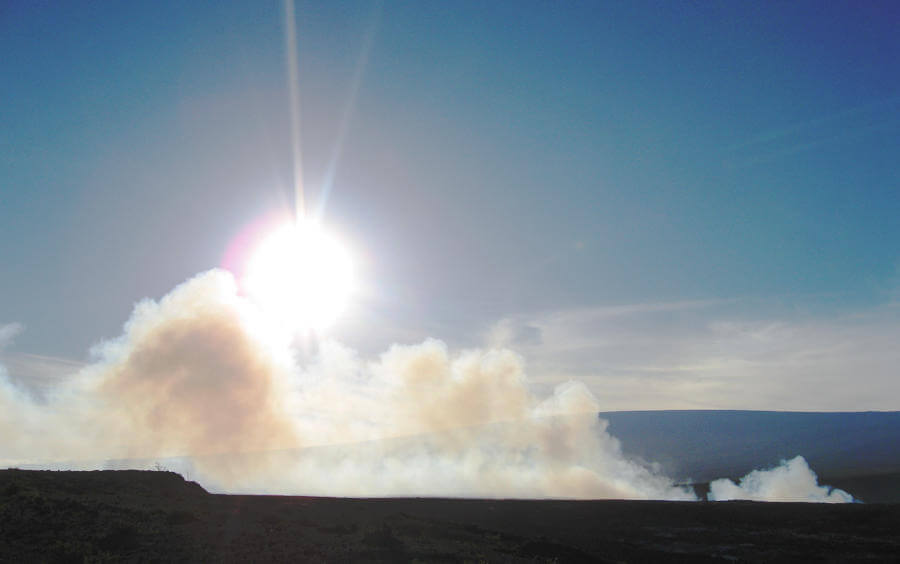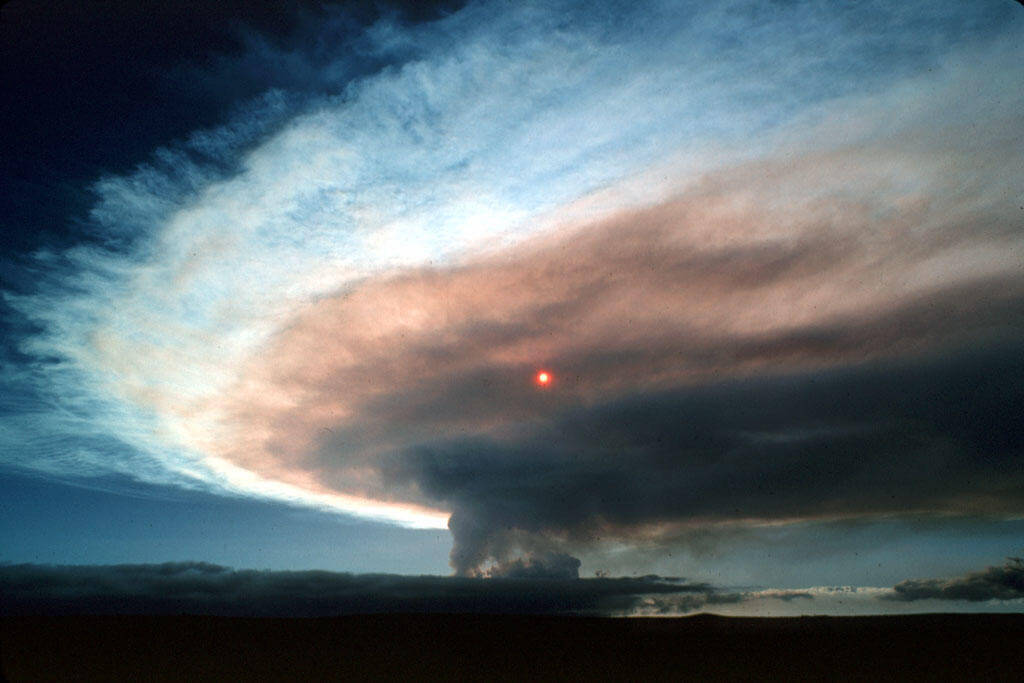BUILDING RISK KNOWLEDGE
WHY THE FOUNDATION WAS BORN? >
WHY THE FOUNDATION WAS BORN? >
DISASTERS ARE NOT NATURAL, they are socially built, due to lack of preparation, prevention, mitigation work, education and monitoring. They are natural risks or hazards that impact vulnerable societies. Knowledge help reducing social and structural vulnerability in order to have more resilient societies!
Magma contains dissolved gases, which are the driving force behind most volcanic eruptions. As the magma rises to the surface and the pressure decreases, the gases are released from the liquid part of the magma (melt) and continue to move upwards, eventually being released into the atmosphere. Large eruptions can release huge amounts of gas in a short period of time. The 1991 eruption of Mount Pinatubo is thought to have injected more than 250 megatonnes of gas into the upper atmosphere in a single day. However, even if the magma never reaches the surface, gases can often escape continuously into the atmosphere from the ground, volcanic vents, fumaroles and hydrothermal systems.
By far the most abundant volcanic gas is water vapor, which is harmless. However, significant amounts of carbon dioxide, sulfur dioxide, hydrogen sulfide and hydrogen halides can also be emitted from volcanoes. Depending on their concentrations, these gases are all potentially hazardous to people, animals, agriculture, and property.

Carbon dioxide gas can collect in low-lying volcanic areas, posing a lethal risk to humans and animals. A burning torch lowered into a CO2 pocket (top) causes the flame to go out (bottom).
Carbon dioxide makes up about 0.04% of the air in the Earth’s atmosphere. When this colourless, odourless gas is emitted from volcanoes, it usually dilutes very quickly to low concentrations and is not life-threatening. However, because cold carbon dioxide is heavier than air, it can flow into low-lying areas where it can reach much higher concentrations under certain very stable atmospheric conditions. This can pose serious risks to people and animals. Breathing air containing more than 3% CO2 can quickly lead to headaches, dizziness, increased heart rate and breathing difficulties. At mixing levels of more than about 15%, carbon dioxide quickly causes unconsciousness and death.

Volcanic mudflows (lahars and debris flows) occur more commonly after a landscape has been covered by loose volcanic material. Sign on the slopes of Rabaul, Papua New Guinea.
In volcanic areas where CO2 emissions occur, it is important to avoid small depressions and low-lying areas that could act as CO2 traps. The line between healthy air and deadly gas can be extremely sharp; just one step. High concentrations of CO2 gas in soils can also damage or destroy vegetation.
In addition to their direct hazard, volcanic CO2 emissions also have the capacity to affect the global climate, but scientific studies indicate that the average global volcanic output is insignificant when compared to emissions from human activity.
Sulphur dioxide is a colourless gas with a pungent smell that irritates the skin, tissues and mucous membranes of the eyes, nose and throat. SO2 emissions can cause acid rain and air pollution, high concentrations of sulphur dioxide produce volcanic smog (VOG) which causes persistent health problems for people. During very large eruptions, SO2 can be injected into the stratosphere at altitudes above 10 km. There, the SO2 is transformed into sulphate aerosols that reflect sunlight and thus have a cooling effect on the Earth’s climate. They also play a role in ozone depletion, as many ozone-destroying reactions occur on the surface of these aerosols.

Gas Plume during the 1984 eruption of Mauna Loa, Hawaii blocks out the sun.
Hydrogen sulphide is a colourless, flammable gas with a strong, foul smell. It is sometimes called sewer gas. Interestingly, the human nose is more sensitive to H2S than any gas monitoring instrument we have today: the smell is associated with a rotten egg smell. Exposure to 500 ppm can render a human unconscious within 5 minutes and dead within an hour or less.
When magma ascends close to the surface, volcanoes can emit the halogens fluorine, chlorine and bromine in the form of hydrogen halides (HF, HCl and HBr). These species have high solubility; therefore they rapidly dissolve in water droplets within volcanic plumes or the atmosphere where they can potentially cause acid rain. In an ash-producing eruption, ash particles are also often coated with hydrogen halides. Once deposited, these coated ash particles can poison drinking water supplies, agricultural crops, and grazing land.
VOLCANO ACTIVE FOUNDATION RESPONSABILITY
nº 2195 authorised by the Madrid's Minister of Justice
NIF G67314625
SF Abocados Francesc Macia 7 pl17
08029 Barcelona, Spain
We may request cookies to be set on your device. We use cookies to let us know when you visit our websites, how you interact with us, to enrich your user experience, and to customize your relationship with our website.
Click on the different category headings to find out more. You can also change some of your preferences. Note that blocking some types of cookies may impact your experience on our websites and the services we are able to offer.
These cookies are strictly necessary to provide you with services available through our website and to use some of its features.
Because these cookies are strictly necessary to deliver the website, refusing them will have impact how our site functions. You always can block or delete cookies by changing your browser settings and force blocking all cookies on this website. But this will always prompt you to accept/refuse cookies when revisiting our site.
We fully respect if you want to refuse cookies but to avoid asking you again and again kindly allow us to store a cookie for that. You are free to opt out any time or opt in for other cookies to get a better experience. If you refuse cookies we will remove all set cookies in our domain.
We provide you with a list of stored cookies on your computer in our domain so you can check what we stored. Due to security reasons we are not able to show or modify cookies from other domains. You can check these in your browser security settings.
These cookies collect information that is used either in aggregate form to help us understand how our website is being used or how effective our marketing campaigns are, or to help us customize our website and application for you in order to enhance your experience.
If you do not want that we track your visit to our site you can disable tracking in your browser here:
We also use different external services like Google Webfonts, Google Maps, and external Video providers. Since these providers may collect personal data like your IP address we allow you to block them here. Please be aware that this might heavily reduce the functionality and appearance of our site. Changes will take effect once you reload the page.
Google Webfont Settings:
Google Map Settings:
Google reCaptcha Settings:
Vimeo and Youtube video embeds:
The following cookies are also needed - You can choose if you want to allow them:
You can read about our cookies and privacy settings in detail on our Privacy Policy Page.
PRIVACY POLICY